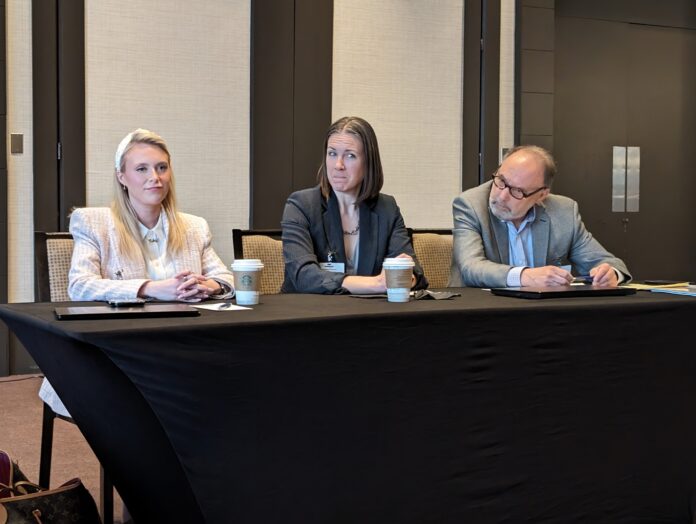Mark Buckshon
Ontario Construction Report staff writer
How is the adjudication system working under the Ontario Construction Act since the system came into effect Oct. 1, 2019?
The answer, said speakers at the Ontario General Contractors’ Association (OGCA) symposium last week, varies depending on the circumstances – and the results are murky because of the confidential nature of the process. However, adjudications are gaining traction with an increasing volume of cases – more than 500 – resolved through ODACC (Ontario Dispute Adjudication for Construction Contracts), mostly in the last two years.
Adjudicator Lindsay Reynolds, for example, said she has been surprised that most of the cases relate to government/public sector contractors, along much smaller disputes involving homeowners and small residential projects. Reynolds is the president and principal project manager at construction manager Hancock & MacArthur, one of a relatively small number of adjudicators with construction rather than legal expertise.
The public sector engagement is expected, she said, but the residential adjudications are baffling “because we’re not really sure where homeowners and small contractors are learning about this,” she said.
“And there seems to be a gap” in the Industrial/Commercial/Institutional (ICI) private sector, where there is a disproportionately small number of adjudication filings.
Moderators Leonard Finegold and Kaleigh DuVernet, both lawyers and partners at Goldman Sloan Nash & Haber LLP, suggested that the reason for the lack of private sector ICI adjudications could be that the Construction Act is working as intended – under threat of adjudication, settlements and agreements are achieved before there is a need to seek or complete an adjudication.
Notably, Reynolds says most of the adjudications she’s seen relate to change order disputes rather than the original objective of the adjudication system – ensuring that “proper invoices” are paid promptly.
The Construction Act sets an aggressive timeline for adjudication; and the resulting intensity can be challenging for everyone involved in the system – especially the organization on the receiving-end of a claim; given just a few days to prepare its response.
This is why Finegold suggested the most important measure any subcontractor, general contractor or owner can take to succeed is to keep everything well documented during the life of the project. If you have just five days to respond, you won’t want to be caught in a place where you can’t find the relevant evidence to back up your case.
One issue relating to adjudication – and perhaps a reason that some ICI contractors are trying to avoid it if possible – is concerns about the quality of the adjudicators and their decisions.
Speakers at the conference discussion outlined two problems and some possible work-arounds.
First, while ODACC lists 51 adjudicators in its roster, you won’t necessarily have an adjudicator assigned to your dispute that truly has the technical expertise and knowledge required to interpret it effectively.
Under the rules, the disputing parties can agree on an adjudicator, but if they don’t, ODACC will select the individual – and the selection will be based on dispute value and the geographic location of the project , rather than relevant subject-area experience.
The second problem, the panel agreed, is that since everything is confidential, there’s no easy way to learn from previous cases and build a precedent-setting knowledge-base.
“That does make it a little bit difficult, as adjudicators have to build on their own experience, adjudication by adjudication,” Reynolds said.
These matters can become especially challenging for claims involving hundreds of thousands of dollars. Under the rules, once the adjudicator makes an “interim binding” ruling, the loser has just days to pay the adjudicated amount. If not, the contractor or sub-trade can walk off the job, and be paid to remobilize.
While the matter can be “appealed” to the courts through a reconstituted claim or judicial review process, this can take years – and since the winner at the initial stage has the money, recovery may be challenging, if not impossible.
Most challenging are disputes near the project conclusion. The ODACC system only applies when the construction contract is in force; and many disputes involve money tied up in lien holdbacks, well after the contract has been completed. Contractors in theory have enough time (60 days) to file a lien if they don’t receive payment from the owner or general contractor – but things get murky when the adjudication process overlaps the lien filing period.
While the rules are that each claim should deal with one issue, the problem is that many construction disputes are complex and involve a number of interrelated claims. One of the panelists indicated that the parties to the dispute can agree on expanding the scope of adjudication, but this doesn’t always happen – as the fees recommended in smaller disputes don’t allow an adjudicator enough hours to hear or decide on multiple matters.

